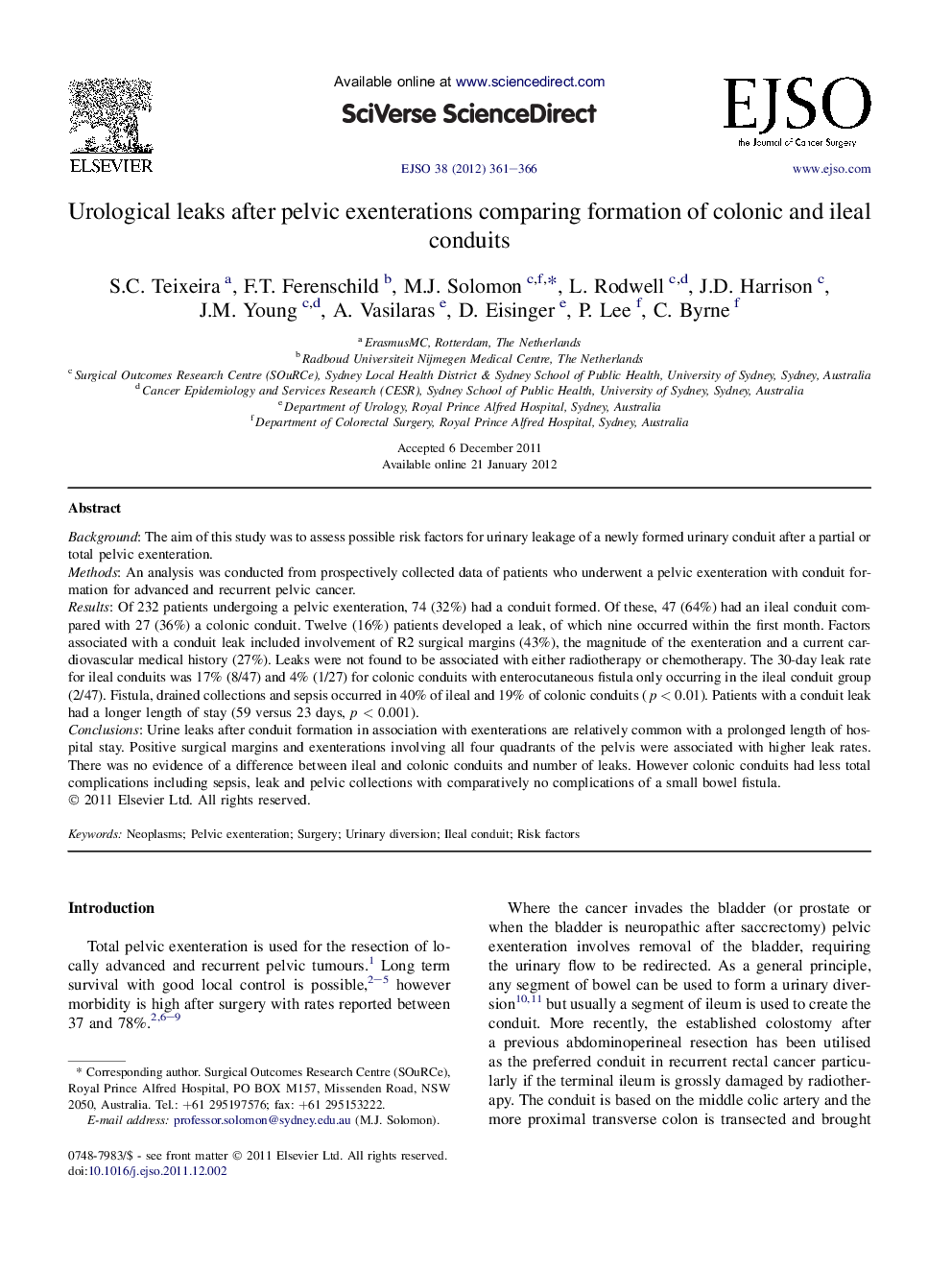| Article ID | Journal | Published Year | Pages | File Type |
|---|---|---|---|---|
| 3986626 | European Journal of Surgical Oncology (EJSO) | 2012 | 6 Pages |
BackgroundThe aim of this study was to assess possible risk factors for urinary leakage of a newly formed urinary conduit after a partial or total pelvic exenteration.MethodsAn analysis was conducted from prospectively collected data of patients who underwent a pelvic exenteration with conduit formation for advanced and recurrent pelvic cancer.ResultsOf 232 patients undergoing a pelvic exenteration, 74 (32%) had a conduit formed. Of these, 47 (64%) had an ileal conduit compared with 27 (36%) a colonic conduit. Twelve (16%) patients developed a leak, of which nine occurred within the first month. Factors associated with a conduit leak included involvement of R2 surgical margins (43%), the magnitude of the exenteration and a current cardiovascular medical history (27%). Leaks were not found to be associated with either radiotherapy or chemotherapy. The 30-day leak rate for ileal conduits was 17% (8/47) and 4% (1/27) for colonic conduits with enterocutaneous fistula only occurring in the ileal conduit group (2/47). Fistula, drained collections and sepsis occurred in 40% of ileal and 19% of colonic conduits (p < 0.01). Patients with a conduit leak had a longer length of stay (59 versus 23 days, p < 0.001).ConclusionsUrine leaks after conduit formation in association with exenterations are relatively common with a prolonged length of hospital stay. Positive surgical margins and exenterations involving all four quadrants of the pelvis were associated with higher leak rates. There was no evidence of a difference between ileal and colonic conduits and number of leaks. However colonic conduits had less total complications including sepsis, leak and pelvic collections with comparatively no complications of a small bowel fistula.
